It is essential in all opening sequences that there is a clear establishment of the characterisation, setting, genre, narrative and visual style of the film. These are all individually presented in different ways, through the use of mise-en-scene, sound, camera angles and editing. It is important that the audience have a brief understanding of the film just from the opening sequence. In only a couple of minutes characters are defined, genre’s are drawn out and the narrative begins to unfold.
GENRE…
The genre that I chose for my film was action-thriller which targets a wide and varied target audience (stated in blog post titled ‘Target Audience’). When first deciding on the genre for my film, one of my main intentions was to pick a genre that was as interesting to film as it is to watch as an audience member. For each individual genre there is a long list of different codes and conventions that go with each one which are extremely important to consider and use when creating a film. Also there are many different aspects of media that contribute to establishing the genre of a film such as camera angles, music and lighting.
Choice of cameras angles is extremely important when trying to establish a genre, as it is essential that you capture all the details which place that film in a certain genre. For example in my title sequence I have used a low angle shot which shows both a gun and a person who’s identity is hidden by only seeing their shadow. Both these concepts are typical of the action/mystery genre, having a hidden identity which is then revealed later on in the film and then the gun which a generic prop used in all action films.
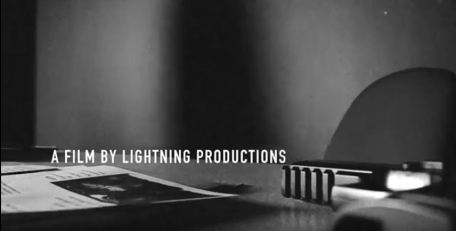
Lighting is also essential to consider for each genre, as one key of lighting creates a completely different atmosphere in a scene to what a different key of lighting has. Low key lighting is commonly used in action, crime, horror, mystery and thriller films as it creates high amounts of suspense and also a tightening atmosphere both in the scene and for the audience. It is clearer to notice in my final product before I made the decision to use the black and white effect, but in my title sequence in particular all the shots were taken using low key lighting which I had hoped would make the audience intrigued and almost suspicious. An perfect example of low key lighting used in an action film is in Mission Impossible 5: Rogue Nation (2015).
Music is also essential in establishing the genre of a film mainly on the basis of the tonality and tempo of the piece of music that is used. For example if it was a comedy film then the music would be in a major key and at a fast but lively tempo to reflect the atmosphere of the genre. However on the other hand if it was horror film the music would be in a minor key and a slow tempo which prolongs the intensity and suspense in the scene. For my final product I chose two separate pieces of music, one for my title sequence and one for my opening sequence. The piece of music below is from the Jason Bourne soundtrack and I have included used this as a comparison, as it is successful in creating suspense which is what intended to do.
CHARACTERISATION…
Establishing characters in a film is essential so it is clear to the audience who the protagonist and antagonist is and who they ‘work with’. There are 4 fundamental points to consider when looking at characterisation in film: Relationships, Conflict, Techniques and Main Characters. To begin with characterisation can be achieved through using different techniques, for example in my title and opening sequence I chose to use props, costume and dialogue. To show the difference between the antagonist and protagonist in my final product, Sam’s character is wearing formal/business wear to present his character, however my characters wear quite casual clothes to blend in undetected with other characters in the film. Props are most likely the most effective technique which establishes the characters. Relationships and conflict shows the proximity between characters through both dialogue and movement.
SETTING…
The piece of setting which is established in my final product is the MI6 Secret Service Headquarters which supplies the audience with the knowledge of the location which is more than some of the characters in the film have. My decision to use an old historic building also means that no body would suspect a Secret Service Headquarters to be based in the building due to it’s exterior which is deceiving. Setting helps to establish the characters movements and status in a film, for example if somebody was locking the front door of a modern and high marketed house it is clear that the character may be of a high social class.
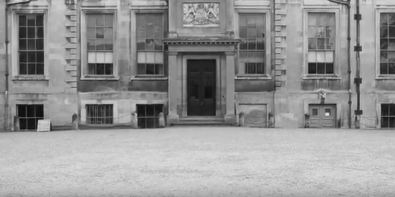
In my work I also used a considerable amount of mise-en-scene, which was created by the objects already on location, the positioning of which I took advantage of. However it was essential that I used shots that were true to the genre I was filming for but would also create intrigue.
My intentions for my final product after using the black and white effect was to set in in a specific time period: 1950’s. The whole concept of using the historic manor house assisted in this as it brought and aging atmosphere to my product, predominantly through the use of mise-en-scene.
VISUAL STYLE…
The visual style of my final product, I would say is unique for present day film making. The black and white filter which I used during editing isn’t used in modern day films today as frequently as it used to. Personally, I would say that my final product isn’t like any other upcoming/ new release films in the present day. Every film has it’s own individual visual style which all comes from the director ideas which can change throughout the creation of the film. Establishing the visual style of a film during the opening sequence helps the audience understand clearly what the director was thinking and the direction in which the rest of the film is going.
NARRATIVE…
Vladimir Propp’s Theory: Characters in Narrative
- Hero (e.g. Captain America from Captain America: First Avenger)
- Villain (e.g. The Joker from Batman)
- The Donor (e.g. Galadriel from the Lord of the Rings)
- The Dispatcher (e.g. Dumbledore from Harry Potter)
- The False Hero (e.g. Cheshire Cat from Alice in Wonderland)
- The Helper (e.g. R2-D2 from Star Wars)
- The Princess (e.g. Jane from Thor)
- Princesses Father (e.g. The King from Shrek)
There are different types narrative structure that are used in films but the most simple one is beginning with a problem and then resolving it at the end:
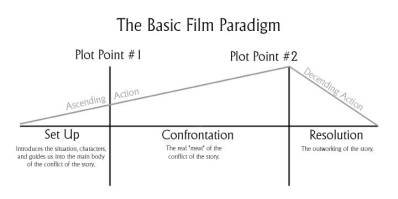
However other structures are more developed such as the ‘3 Act Structure’ :
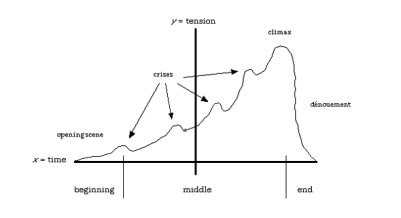
Comparison- My film and an existing film
During the planning stages I had a look at a range of different action/thriller films to get some ideas of different shots and camera angles that I could use in my product. In my opinion I don’t think there is one single film which includes the same angle shots as mine, however the concept and intentions are the same.
Establishing Shot – The first image shows the establishing shot of the MI6 HQ from my final product and the second image shows the establishing shot of the MI6 HQ from James Bond: Spectre. Both shots are similar in the sense that they are almost from the same angle, never the less the concept of capturing the location is important point.
These two images are similar in the sense that the shot is the same, except from the camera angle. In the first image the camera angle is a mid shot and in the second image the angle is very similar to a point of view shot. My intention for this shot was to have a point of view shot, however I really liked the idea of using the shadows instead revealing the characters, which is different to the second images as we see the characters involved.
The next two images show the similarity between the narrative and camera shot/angle in my final product and Jason Bourne. In both stills you can see a classified file being looked in and then taken away which is what I had intended to achieve after watching the film for ideas.
The final set of images shows two different close ups of important information which is essential to the understanding of a character in my final product and the narrative in Jason Bourne. The props used in the two images is not the same, however the concept is.
TITLE SEQUNECE ANALYSIS…
My intentions for my title sequence was to create a sense of enigma as well as establishing location and setting, through mise-en-scene, at the same time. In each shot of my title sequence I wanted the titles to be seen clearly, but I also wanted to position them in an interesting way. In the first frame I wanted the shadow of the person to be prominent and not covered by the titles so I decided to move them down. Each individual shot of my title sequence presents the mise-en-scene and builds up tension.
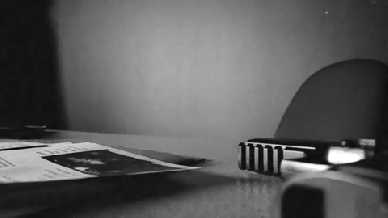
Frame 1
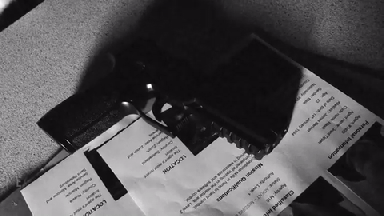
Frame 2
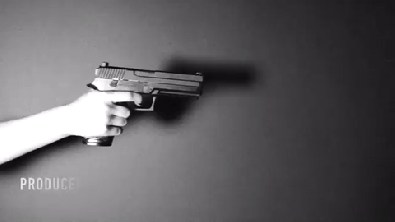
Frame 3
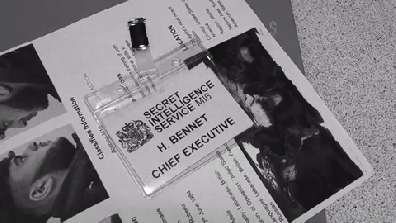
Frame 4
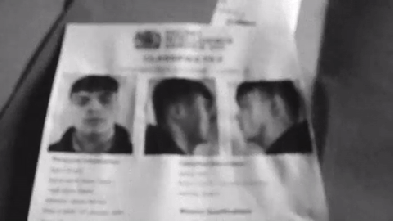
Frame 5
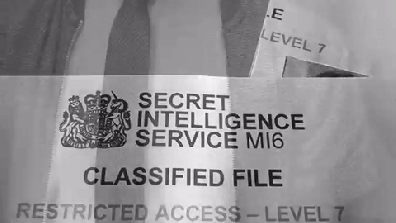
Frame 6
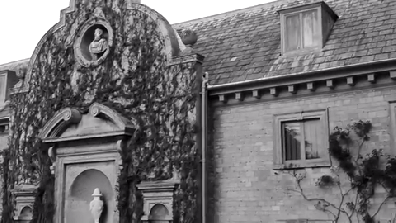
Frame 7
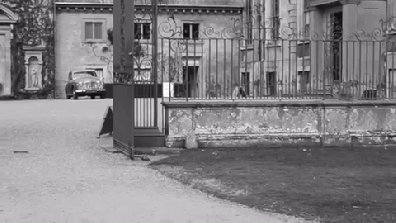
Frame 8

Frame 9















